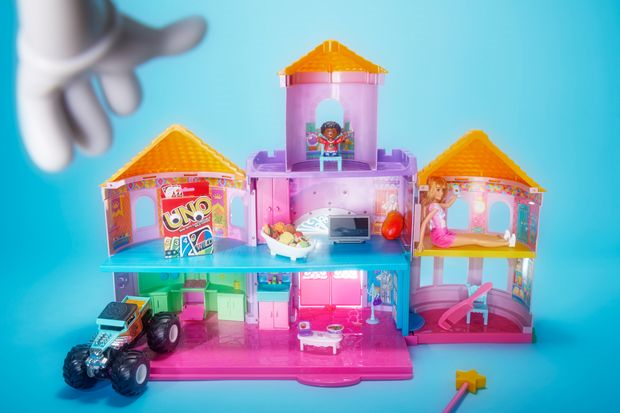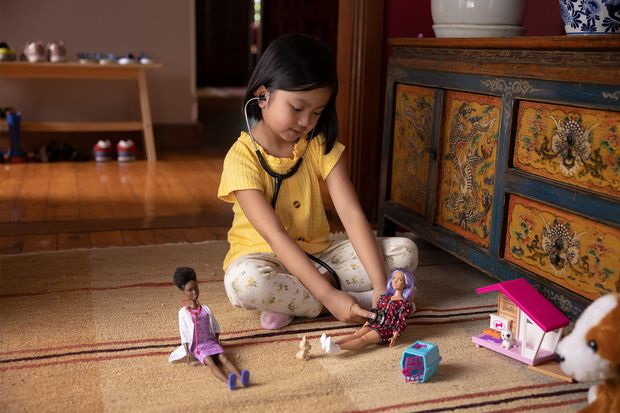
Source: WSJ.com
CEO Ynon Kreiz on the future of screen time, values in the toy aisle and the continuing evolution of the famous doll
Ynon Kreiz has made play his work. As the chief executive of Mattel, the 76-year-old toy company, Mr. Kreiz oversees Barbie dolls, Hot Wheels cars and other children’s products that have filled toy shelves for decades—and this past year, served as pandemic lifesavers for parents entertaining bored kids stuck at home.
These are some of the most iconic brands in the world. Making any changes to such beloved brands means balancing the new with the nostalgic. But now that the U.S. is reopening and quarantines are being lifted, Mr. Kreiz faces a fresh challenge: Adjusting to the new expectations and desires of consumers shaped by 14 months of seismic changes to work-life balance and nationwide calls for better inclusivity and representation in the broader culture. Add it to the list of changes Mr. Kreiz must bring to a company that had seen lower sales—and significant executive turnover—before he assumed the CEO job in April 2018. Since he took over, Mattel has seen three consecutive quarters of growing market share, and its stock price has returned to levels not seen since the summer of 2017.
A veteran of the tech world, Mr. Kreiz says he wants to leverage the iconic brands under the Mattel banner, from American Girl to Fisher-Price, in broader ways that include movies, digital assets and more. He raised eyebrows in Hollywood in 2019 after hiring Greta Gerwig and Noah Baumbach—two directors and romantic partners known for adult-oriented features like “Lady Bird” and “Marriage Story,” respectively—to make a “Barbie” movie. Beyond the move to the big screen, Mr. Kreiz foresees a decade ahead of continued focus on the values and virtues underlying the toy shelf or online retailer.
After all, Barbie has kept up with the times, graduating from vacations in Malibu to the medical profession, astronomy and even president of the United States. What will Mattel’s future look like?

Source: WSJ.com
Play With a Purpose
It’s no longer enough to sell kids on a new toy with a flashy commercial and count on them to beg their parents to buy it.
Covid-19 has reiterated “the importance of physical play, and how much priority parents and children place on quality products and known, trusted brands,” Mr. Kreiz says. That goes beyond making toys that don’t fall apart. Parents are increasingly drawn to toys that inculcate real-world values in their kids, he says. Barbie’s jobs must reflect the aspirations of today’s young women. Even a Hot Wheels set is about “igniting and nurturing the challenger spirit that lives within every kid,” Mr. Kreiz says.
And in some cases, Mattel has tapped into parental concerns about their child’s emotional health. The company’s Barbie brand recently teamed up with neuroscientists at Cardiff University—not to give the doll a new job, but for studies on how doll play can engender empathy among kids.
Values in the Toy Aisle
Mattel toys have been in the conversation about representation and inclusion for decades—and not always for the best reasons, as debates about gender norms, body image and anachronistic values have flared. Barbie in particular has been the target of criticism, her silhouette and lifestyle held up by some parents—and childhood-education researchers—as an unattainable ideal.
More recently, Mattel has joined the conversation actively. “We always look to connect the product to today’s culture,” says Mr. Kreiz, referencing the more inclusive lineup at American Girl, which recently introduced a new character named Joss, a Southern California surfer with hearing loss that requires a hearing aid. In more recent years, Barbie has undergone changes that would have once seemed far-fetched, including one model that has a vitiligo skin condition and another that uses a wheelchair. The share of Barbies sold that fall under these more inclusive categories has risen, according to company data.
Mattel has also instituted a sustainability program that aims to ensure that all company products are 100% made of recycled, recyclable or bio-based plastic materials by 2030. Next year, it will start selling a Tesla Roadster model made by Matchbox of 99% recycled materials. In Mr. Kreiz’s vision, everything across Mattel—from the paper used to print Uno cards to the cellophane that wraps each package—will be made of recyclable material by the end of the decade.
Mr. Kreiz’s previous job was running Maker Studios, a YouTube creator firm that drew kids into the online world. Today, he foresees a future in which the online and offline worlds continue to blend when it comes to play, though he adds that physical toys and products are projected to grow over the next five years.
“Screens in general are a complement,” he says.
There are plans under way to deepen Mattel’s investment in digital and mobile gaming, as well as finding audiences on the big screen, like in a coming Rock ‘Em Sock ‘Em Robots movie starring Vin Diesel, and on the smallest ones, such as digital clips streamed on phones.
Over the past year, Barbie functioned as something of an online tutor for kids at home, with the brand offering how-to lessons and features on Instagram and other social-media platforms.
“We find you wherever you are,” says Mr. Kreiz.
Source: The Wall Street Journal Ehrich Schwartzel | May 6, 2021